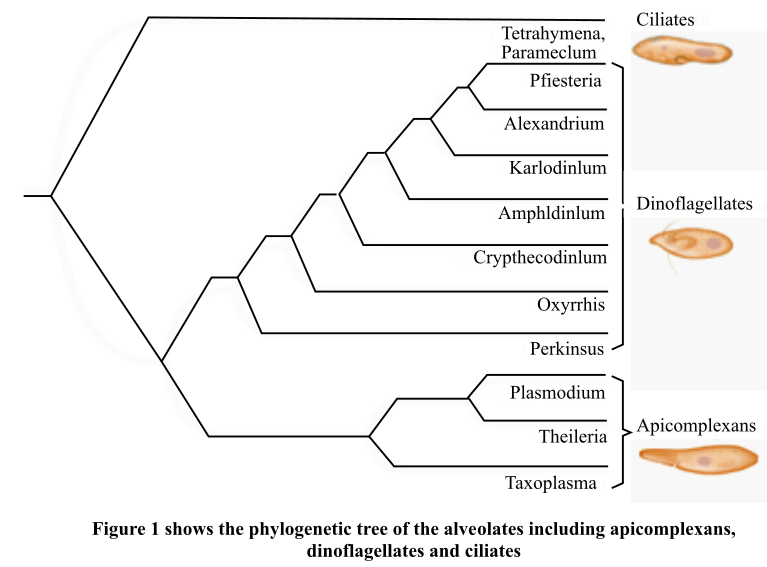
Concept explainers
To review:
The life-history attribute that was likely to be present in the common ancestor of the apicomplexans but, not in other alveolates.
Introduction:
The unicellular organisms with alveoli-like sacs beneath their cell membranes are called as alveolates. Alveolate clades mainly include the
Explanation of Solution

Apicomplexans mainly constitute genus including Plasmodium, Theileria, and Toxoplasma. All these organisms commonly have an exclusively parasitic lifestyle. Thus, it is likely to be a characteristic feature of their common ancestor as well.
It can also be noticed that the host of each of the apicomplexans is a mammal, though it is relatively different from the host of each other. Hence, it is justified to claim that the common ancestor of apicomplexans likely had a mammalian host.
Therefore, it can be concluded that unlike other alveolates, parasitic lifestyle and mammalian host are suitably appropriate for the common ancestor of apicomplexans.
Want to see more full solutions like this?
Chapter 26 Solutions
Life: The Science of Biology
- Why cutaneous respiration does not occur in shark's skin ?arrow_forwardThe type of ascocarp in Eurotium is known as--------------a)Cleistotheciumb)Peritheciumc)Apotheciumarrow_forwardBook lungs and tracheae are terrestrial adaptations that reduce respiration filtration water loss gas exchange One morphological synapomorphy of Spiralia besides spiral cleavage------arrow_forward
- Describe the differences between protonephridia and metanephridia. Give an example of any animalthat possesses either of these structures.arrow_forwardWhy does thermalinversion increases airpollution? What harm canthermal inversion cause tohumans?arrow_forwardWhat types of metabolism were observed in the Excavata and SAR clades? Choose from the following: photoheterotrophs, photoautotroph, chemoheterotrophs, chemoautotrophs, mixotrophs.arrow_forward
- The function of pharyngeal gills includes: ( can be more than one anwser) a. gas exchange b. generating a feeding current c. eliminating excess water during feeding d. producing a mucous netarrow_forwardWhy the birds require parabronchi?arrow_forwardDistinguish among the alveolates: dinoflagellates, apicomplexans,and ciliates.arrow_forward
- Beings from four phyla ofthe animal kingdom “breath”(do gas exchange) bydiffusion. Which are thosephyla? How is this type ofrespiration associated tofeatures present in thoseanimals?arrow_forwardRespiratory System in Insects (air-dried insect and whole mount of insect spiracle and trachea) Parameter Identification/Description/Enumeration Shape of the spiracle Body Segments where spiracles are found Shape of the tracheaarrow_forwardIn cephalopods contraction of _____________________of the mantle force water from the mantle cavity through the ________________. radial----inhalant valve circular-----inhalant valve radial----funnel (siphon) circular----funnel (siphon) tunic----inhalant valvearrow_forward
 Concepts of BiologyBiologyISBN:9781938168116Author:Samantha Fowler, Rebecca Roush, James WisePublisher:OpenStax College
Concepts of BiologyBiologyISBN:9781938168116Author:Samantha Fowler, Rebecca Roush, James WisePublisher:OpenStax College Human Biology (MindTap Course List)BiologyISBN:9781305112100Author:Cecie Starr, Beverly McMillanPublisher:Cengage Learning
Human Biology (MindTap Course List)BiologyISBN:9781305112100Author:Cecie Starr, Beverly McMillanPublisher:Cengage Learning

